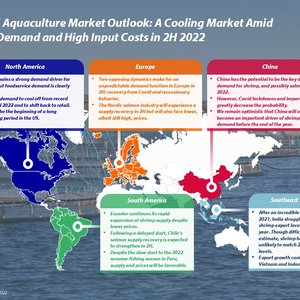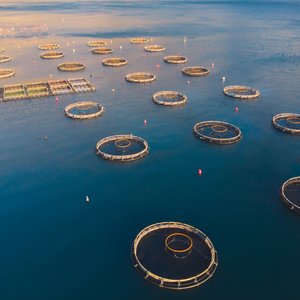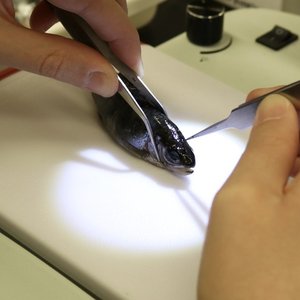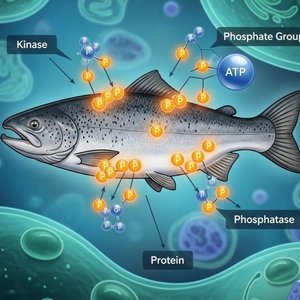Significant growth in aquaculture has driven global fisheries and aquaculture production to a record high as aquatic foods make an increasingly critical contribution to food security and nutrition in the 21st century, according to FAO’s 2022 edition of The State of World Fisheries and Aquaculture (SOFIA).
The report says the growth of aquaculture, particularly in Asia, lifted total production of fisheries and aquaculture to an all-time high of 214 million tonnes in 2020, comprising 178 million tonnes of aquatic animals and 36 million tonnes of algae.
Production of aquatic animals in 2020 was 30% higher than the average in the 2000s and more than 60% above the average in the 1990s. Record aquaculture output of 87.5 million tonnes of aquatic animals largely drove these outcomes.
As the sector continues to expand, FAO says more targeted transformative changes are needed to achieve more sustainable, inclusive and equitable fisheries and aquaculture sector. A “Blue Transformation” in how we produce, manage, trade and consume aquatic foods, is crucial if we are to achieve the UN Sustainable Development Goals, FAO said.
‘’The growth of fisheries and aquaculture is vital in our efforts to end global hunger and malnutrition but a further transformation is needed in the sector to address the challenges,’’ said FAO Director General, QU Dongyu. “We must transform agrifood systems to ensure aquatic foods are sustainably harvested, livelihoods are safeguarded and aquatic habitats and biodiversity are protected.”
Aquatic foods are contributing more than ever before to food security and nutrition. Global consumption of aquatic foods (excluding algae) has increased at an average annual rate of 3.0% since 1961, almost twice that of annual world population growth – reaching 20.2 kg per capita, more than double the consumption in the 1960s.
Over 157 million tonnes – or 89% of aquatic animal production, were used for direct human consumption in 2020, a slightly higher volume than in 2018, despite the impact of the COVID-19 pandemic. Aquatic foods contribute about 17% of the animal proteins consumed in 2019, reaching 23% in lower-middle-income countries and more than 50% in parts of Asia and Africa.
Asian countries were the source of 70% of the world’s fisheries and aquaculture production of aquatic animals in 2020, followed by countries in the Americas, Europe, Africa and Oceania.
Aquaculture shapes the future of aquatic foods
Aquaculture has grown faster than capture fisheries in the last two years and is expected to expand further over the next decade. In 2020, animal aquaculture production reached 87.5 million tonnes, 6% higher than in 2018. On the other hand, capture fisheries production dropped to 90.3 million tonnes, a fall of 4.0% compared with the average over the previous three years.
The reduction in capture fisheries production was mainly driven by the COVID-19 pandemic, which severely disrupted fishing activities, market access and sales, as well as a reduction in China’s catches and a fall in the naturally-fluctuating anchoveta catches.
Growing demand for fish and other aquatic foods is rapidly changing the fisheries and aquaculture sector. Consumption is expected to increase by 15% to supply on average 21.4 kg per capita in 2030, driven mostly by rising incomes and urbanization, changes in post-harvest practices and distribution, as well as in dietary trends focusing on better health and nutrition.
Total production of aquatic animals is expected to reach 202 million tonnes in 2030, mainly due to the continuing growth of aquaculture, projected to reach 100 million tonnes for the first time in 2027 and 106 million tonnes in 2030.
Key numbers from The State of World Fisheries and Aquaculture 2022
Production
- Total global production of aquatic animals and algae: 214 million tonnes
- First-sale value of aquatic animal production: $406 billion
- Marine capture fisheries: 78.8 million tonnes
- Freshwater capture fisheries: 11.5 million tonnes
- Animal aquaculture production: 87.5 million tonnes, a new high
Consumption and trade
- Total amount for human consumption (excluding algae): 157 million tonnes
- Value of international trade of fisheries and aquaculture products: $151 billion
Employment and fleets
- Total employed in primary sector of fisheries and aquaculture: 58.5 million, 21 percent women
- Region with the most fishers and fish farmers: Asia (84 percent)
- Number of fishing vessels on planet: 4.1 million
- Largest fleet by region: Asia (2.68 million vessels, about two thirds of the global fleet)
Download the report below.
new-record-for-global-aquaculture-production-faos-2022-sofia-reports













